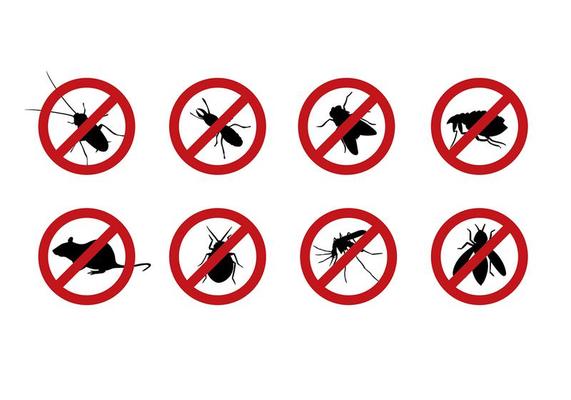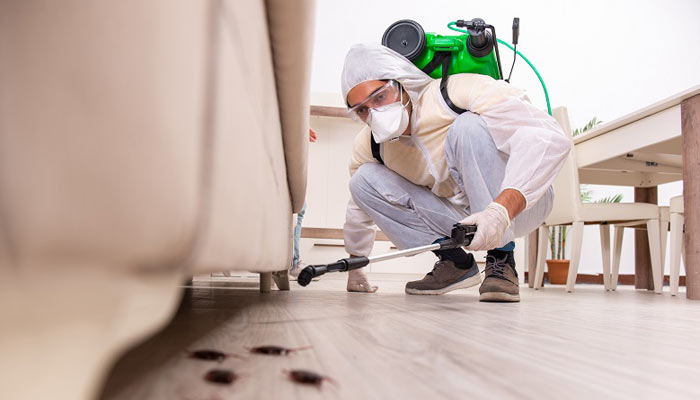A1 Commercial Pest Control Portland - Reliable Bed Bug Solutions for Companies
Wiki Article
Efficient Bug Control Solutions: A Thorough Consider Extermination Techniques and Avoidance Procedures
In the realm of insect control solutions, the effective monitoring of infestations requires a meticulous approach that combines different strategies and measures for both eradication and avoidance. From Integrated Pest Administration (IPM) methods that focus on lasting services to chemical extermination strategies made for targeted elimination, the collection versus pests is complex and substantial. Organic control techniques and physical prevention measures supply alternate courses to efficiently combating unwanted burglars. Nevertheless, the secret to an extensive pest control strategy lies not simply in the strategies themselves, yet additionally in the precise professional examination treatments that precede and inform them. By understanding the details of each method and how they interaction, one can genuinely grasp the intricacy and performance of modern bug control solutions.
Integrated Pest Management (IPM) Methods
Integrated Bug Monitoring (IPM) Approaches encompass an extensive method to pest control that concentrates on avoidance, control, and tracking approaches to efficiently take care of parasite populaces. By integrating different strategies, IPM intends to minimize the impact of insects while likewise minimizing the dependence on chemical pesticides. Prevention exists at the core of IPM, stressing practices like correct sanitation, upkeep of health, and securing access indicate hinder parasites from infesting structures. Monitoring plays a critical duty in IPM by routinely checking and determining bug degrees to establish the ideal treatment thresholds. Control approaches in IPM prioritize using physical, biological, and cultural approaches prior to turning to chemical therapies as a last option. These strategies consist of introducing all-natural predators, environment modification, and employing capturing gadgets to keep pest populations in check. Generally, IPM promotes a lasting and environmentally conscious method to pest administration, promoting long-lasting options that secure both human wellness and the environment.Chemical Extermination Techniques
Chemical extermination techniques are commonly employed in pest control services to successfully eliminate insect populations that pose a danger to human health and wellness and home. These strategies involve the usage of numerous chemical compounds particularly created to target and remove insects such as pests, rats, and various other undesirable animals. The application of chemicals, pesticides, rodenticides, and other chemical agents is carefully controlled to make sure maximum effectiveness while lessening dangers to humans, pet dogs, and the setting.Among the vital advantages of chemical extermination methods is their capability to offer quick and targeted outcomes, making them especially valuable in situations of extreme infestations or urgent bug control demands - a1 bed bugs exterminator portland. Nevertheless, it is important to highlight the relevance of proper handling, application, and disposal of these chemical items to stop unplanned damage
Furthermore, integrated parasite management (IPM) techniques usually incorporate chemical elimination strategies with various other methods such as cleanliness, environment alteration, and biological controls to develop a thorough and sustainable bug control approach. By including chemical elimination strategies judiciously within an IPM framework, parasite control services can properly manage parasite populations while decreasing possible risks to human health and the setting.
Biological Pest Control Approaches
Using natural predators and parasites to take care of bug populations is a lasting approach known as biological pest control. a1 residential pest control portland or bed bugs. One typical organic control method involves presenting all-natural opponents of the target insect species, such as ladybugs for aphid control or nematodes for termite infestations.An additional reliable biological control strategy is making use of microbial pesticides. These are naturally occurring microbes, such as viruses, germs, and fungi, that specifically target and contaminate particular insect species. By making use of these microbial representatives, pest populations can be properly lowered without harming valuable organisms or triggering injury to the environment.
Physical Bug Avoidance Procedures
Carrying out physical pest avoidance measures involves utilizing obstacles and structural adjustments to prevent parasites from infesting a residential or commercial property or entering (a1 portland bed bug exterminator). One reliable method is sealing all possible access points such as spaces around doors, windows, and energy infiltrations. Mounting door moves, displays on home windows, and securing cracks in the structure can help stop insects like pests and rats from getting inside. In addition, check this keeping a clutter-free and clean environment is vital as insects are brought in to food sources and concealing spots. On a regular basis examining and fixing any type of broken screens, vents, or roof covering tiles can also help in keeping parasites out.One more physical avoidance procedure is the usage of barriers like fence to maintain larger parasites such as raccoons or deer away from the residential property. Mounting mesh or cord screens around gardens can protect plants from being harmed by parasites. Correct waste administration, consisting of protecting trash containers with tight-fitting lids, is important in deterring pests like rodents, insects, and raccoons. By applying these physical bug prevention procedures, homeowner can significantly decrease the risk of bug infestations and the damages they can cause.
Specialist Bug Assessment Procedures
Carrying out complete and systematic insect inspections is an essential element of expert bug monitoring procedures. Specialist insect assessors are educated to carefully check out buildings for signs of invasions, determining pest species, access factors, and favorable problems.
Conclusion
useful reference In conclusion, effective bug control solutions employ a range of methods, consisting of Integrated Parasite Management methods, chemical elimination methods, biological controls, and physical avoidance actions. Professional insect examination procedures play a critical function in identifying and resolving pest issues in a prompt fashion. By executing a combination of these techniques, homeowner can efficiently stop and take care of pest infestations.From Integrated Insect Monitoring (IPM) approaches that focus on sustainable options to chemical elimination techniques developed for targeted elimination, the toolbox versus bugs is vast and diverse.Integrated Insect Administration (IPM) Methods incorporate an extensive technique to pest control that concentrates on avoidance, tracking, and control approaches to efficiently handle insect populations.Chemical extermination techniques are generally utilized in insect control services to efficiently remove bug populaces that pose a risk to human health and wellness and property.Using natural killers and parasites to manage bug populations is a sustainable approach understood as organic bug control.In conclusion, reliable insect here control solutions utilize a variety of strategies, including Integrated Pest Monitoring methods, chemical extermination techniques, biological controls, and physical avoidance steps.
Report this wiki page